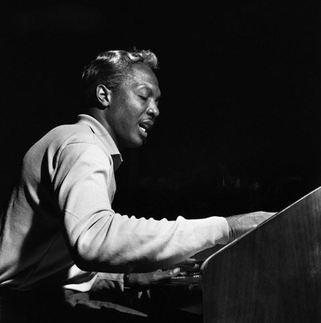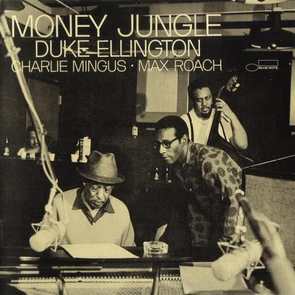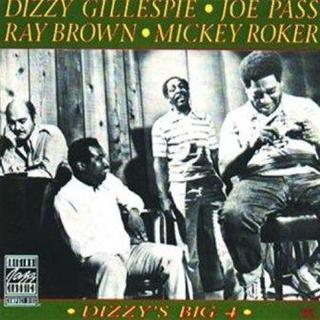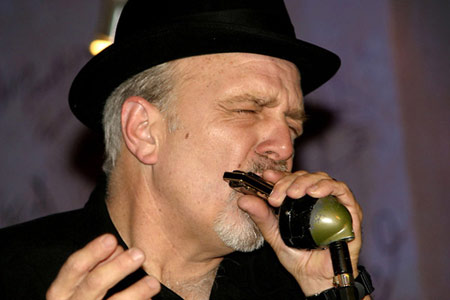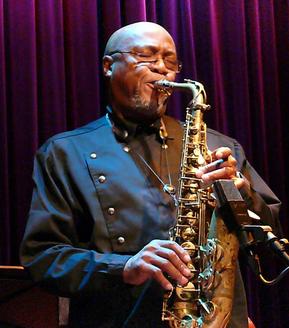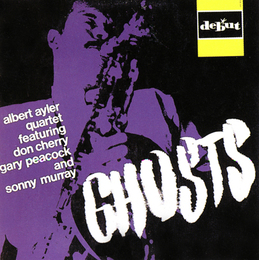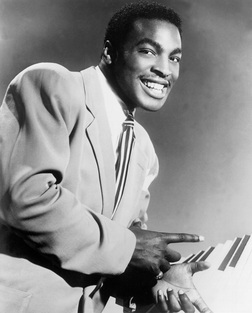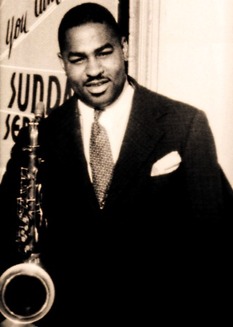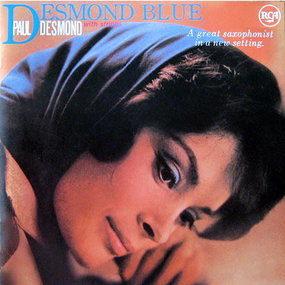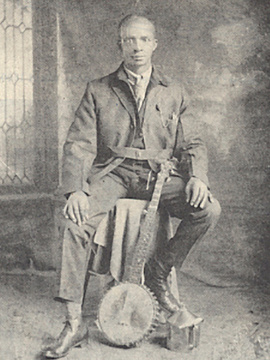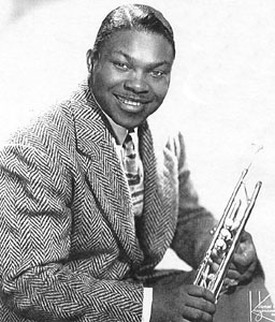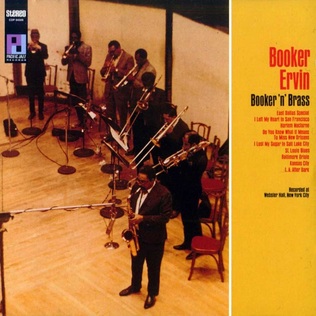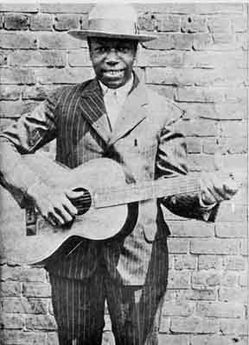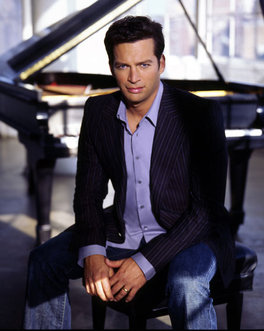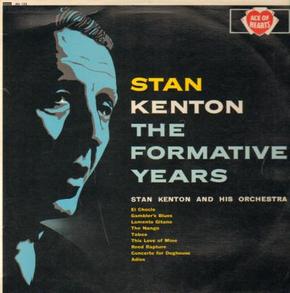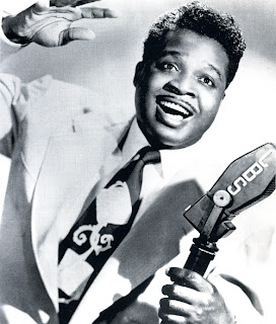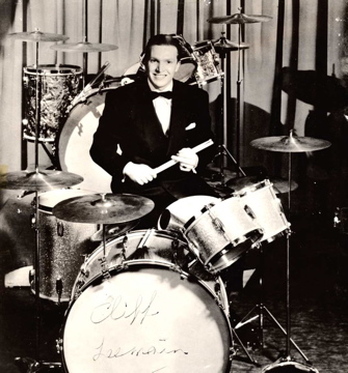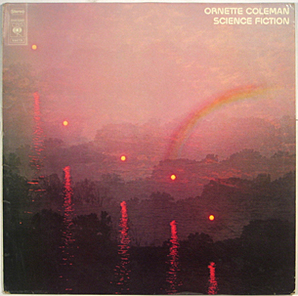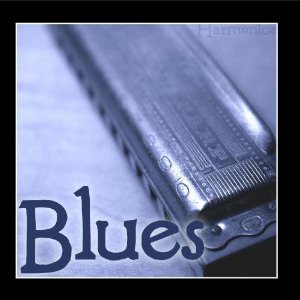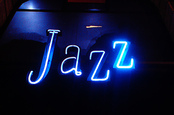JAZZ ARTIST BIRTHDAY: Brother Jack McDuff (1926) – A marvelous bandleader and organist as well as capable arranger, "Brother" Eugene “Brother Jack” McDuff had one of the funkiest, most soulful styles of all time on the Hammond B-3. His rock-solid basslines and blues-drenched solos were balanced by clever, almost pianistic melodies and interesting progressions and phrases. McDuff began as a bassist playing with Denny Zeitlin and Joe Farrell. He studied privately in Cincinnati and worked with Johnny Griffin in Chicago. He taught himself organ and piano in the mid-'50s, and began gaining attention working with Willis Jackson in the late '50s and early '60s, cutting high caliber soul-jazz dates for Prestige. McDuff made his recording debut as a leader for Prestige in 1960, playing in a studio pickup band with Jimmy Forrest. They made a pair of outstanding albums: Tough Duff and The Honeydripper. McDuff organized his own band the next year, featuring Harold Vick and drummer Joe Dukes. Things took off when McDuff hired a young guitarist named George Benson. They were among the most popular combos of the mid-'60s and made several excellent albums. McDuff's later groups at Atlantic and Cadet didn't equal the level of the Benson band, while later dates for Verve and Cadet were uneven, though generally good. McDuff experimented with electronic keyboards and fusion during the '70s, then in the '80s got back in the groove with the Muse sessions. While his health fluctuated throughout the '90s, McDuff released several discs on the Concord Jazz label before succumbing to heart failure on January 23, 2001, at the age of 74.
JAZZ ALBUMS RECORDED: Duke Ellington – Money Jungle (1962)
Track Listing:
1. Very Special
2. A Little Max
3. A Little Max
4. Fleurette Africaine
5. Rem Blues
6. Wig Wise
7. Switch Blade
8. Caravan
9. Money Jungle
10. Solitude
11. Solitude
12. Warm Valley
13. Backward Country Boy Blues
Review by Ken Dryden at Allmusic:
Duke Ellington surprised the jazz world in 1962 with his historic trio session featuring Charles Mingus and Max Roach. Not in a mood to simply rework older compositions, the bulk of the LP focused on music he wrote specifically for the session. "Money Jungle" is a thunderous opener, a blues that might be classified somewhere between post-bop and avant-garde. The gem of the date is the fragile, somewhat haunting ballad "Fleurette Africaine," where Mingus' floating bassline and Roach's understated drumming add to the mystique of an Ellington work that has slowly been gathering steam among jazz musicians as a piece worth exploring more often. "Very Special" is a jaunty upbeat blues, while the angular, descending line of "Wig Wise" also proves to be quite catchy. Ellington also revisits "Warm Valley" (a lovely ballad indelibly associated with Johnny Hodges) and an almost meditative "Solitude." Thunderous percussion and wild basslines complement a wilder-than-usual approach to "Caravan." Every jazz fan should own a copy of this sensational recording session.
Dizzy Gillespie – Dizzy’s Big 4 (1974)
Track Listing:
1. Frelimo
2. Hurry Home
3. Russian Lullaby
4. Be Bop (Dizzy’s Fingers)
5. Birk’s Works
6. September Song
7. Jitterbug Waltz
Review by Ken Dryden at Allmusic:
Dizzy Gillespie omits a piano on these 1974 sessions, but it is never missed due to the potent rhythm section supplied by guitarist Joe Pass, bassist Ray Brown, and drummer Mickey Roker. Starting with the inspired, occasionally funky Latin-flavored "Frelimo" (which features the leader on both muted and open trumpet), Gillespie is in top form. His deliberate treatment of the forgotten chestnut "Hurry Home" is a lyrical gem, while the breezy setting of the standard "Russian Lullaby" bubbles with excitement. But the fireworks take place in the rapid-fire performance of Gillespie's "Be Bop (Dizzy's Fingers)," in which Pass seems to play at an impossible tempo. Just as much fun is the sassy, intricate interpretation of the trumpeter's blues "Birk's Works," powered by Brown's potent bass, along with the hip updated treatment of Fats Waller's "Jitterbug Waltz." This is easily one of Dizzy Gillespie's best small-group recordings from the latter portion of his career.
BLUES ARTIST BIRTHDAY: Darrell Nulisch (1952) - Nulisch grew up on soul singers like Otis Redding and Al Green, inspiring him to take up a similar path and work on his voice. He was a founding member of Anson Funderburgh's Rockets and sang with that group in the '80s, when he also did time in groups like Ronnie Earl's Broadcasters. He eventually left Texas and started a solo career in 1991, relocating to Boston and releasing albums that showcased his incredible blues-harmonica skills and his passionate voice. Even legendary soul singer James Cotton asked Nulisch to work with his touring band when he lost his voice, giving Nulisch a chance to work with someone he admired. He continued his solo efforts into the next century, releasing the critically acclaimed I Like It That Way in the spring of 2000.
JAZZ ARTIST BIRTHDAY: Oliver Lake (1942) - Oliver Lake is an explosively unpredictable soloist, somewhat akin to Eric Dolphy in the ultra-nimble manner in which he traverses the full range of his main horn, the alto. Lake's astringent saxophone sound is his trademark -- piercing, bluesy, and biting in the manner of a Maceo Parker, it was a perfect lead voice for the World Saxophone Quartet, the band with which Lake has arguably made his most enduring music. In the late 1960s, Oliver became a founding member of the Black Artists Group in St. Louis. Since moving to New York to participate in the "Creative Music" revolution of the mid 70's, Oliver has performed in a wide array of contexts from the Oliver Lake Quartet and his groundbreaking Roots/Reggae/Jazz group. Oliver is also an original member of the acclaimed World Saxophone Quartet and has toured widely with two performance pieces "The Life Dance Of Is" and "Matador." As a composer, arranger, saxophonist, flautist, poet and conceptualizer, Oliver Lake embodies all the tenets of the Creative music idea. He is above all else, an original artist.
JAZZ ALBUM RECORDED: Albert Ayler – Ghosts (1964)
Track Listing:
1. Ghosts
2. Children
3. Holy Spirit
4. Ghosts
5. Vibrations
6. Mothers
Review by Scott Yanow at Allmusic:
1964 was a busy year for Albert Ayler, who recorded at least seven albums worth of material. This particular session, a quartet date with trumpeter Don Cherry, bassist Gary Peacock and drummer Sunny Murray, was probably his most significant of the period. Switching between tenor and alto, Ayler is often ferocious on the six performances, jumping from simple melodies (of which "Ghosts" is the most memorable) to intense sound explorations overflowing with emotion; he even makes Cherry seem conservative. It helps greatly to have open ears to appreciate this music, although Ayler's jams would become a bit more accessible the following year. Recommended.
BLUES ARTIST BIRTHDAY: Charles Brown (1922) - How many blues artists remained at the absolute top of their game after more than a half-century of performing? One immediately leaps to mind: Charles Brown. His incredible piano skills and laid-back vocal delivery remained every bit as mesmerizing at the end of his life as they were way back in 1945, when his groundbreaking waxing of "Drifting Blues" with guitarist Johnny Moore's Three Blazers invented an entirely new blues genre for sophisticated postwar revelers: an ultra-mellow, jazz-inflected sound perfect for sipping a late-night libation in some hip after-hours joint. Brown's smooth trio format was tremendously influential to a host of high-profile disciples -- Ray Charles, Amos Milburn, and Floyd Dixon, for starters. Classically trained on the ivories, Brown earned a degree in chemistry before moving to Los Angeles in 1943. He soon hooked up with the Blazers (Moore and bassist Eddie Williams), who modeled themselves after Nat King Cole's trio but retained a bluesier tone within their ballad-heavy repertoire. With Brown installed as their vocalist and pianist, the Blazers' "Drifting Blues" for Philo Records remained on Billboard's R&B charts for 23 weeks, peaking at number two. Follow-ups for Exclusive and Modern (including "Sunny Road," "So Long," "New Orleans Blues," and their immortal 1947 Yuletide classic "Merry Christmas Baby") kept the Blazers around the top of the R&B listings from 1946 through 1948, until Brown opted to go solo to even greater success. In his last years, Brown finally received at least a portion of the recognition he deserved for so long as a genuine rhythm and blues pioneer. But the suave, elegant Brown was by no means a relic, as anyone who witnessed his thundering boogie piano style will gladly attest; he returned in 1998 with So Goes Love before dying on January 21, 1999.
JAZZ ARTIST BIRTHDAY: Chu Berry (1908) - Leon Brown “Chu” Berry was considered one of the top tenor saxophonists of the 1930s, just below Coleman Hawkins (his main influence), Lester Young, and Ben Webster. Particularly strong on up-tempo numbers (although his ballad statements could be overly sentimental), Berry might have become an influential force if he had not died prematurely. After playing alto in college, he switched to tenor in 1929 when he joined Sammy Stewart's band. In 1930, he moved to New York, playing with Benny Carter's band and Charlie Johnson's orchestra. He was prominently featured in Spike Hughes' 1933 recording sessions, was a star with the bands of Teddy Hill (1933-1935) and Fletcher Henderson (1936; to whom he contributed his song "Christopher Columbus"), and then found a permanent home with Cab Calloway in 1937. Berry was used on many sessions including with his friend Roy Eldridge, Lionel Hampton (a classic version of "Sweethearts on Parade"), Teddy Wilson, and Calloway (his version of "Ghost of a Chance" became well-known); in addition he led a couple of his own fine dates. Chu Berry died from the effects of a car crash on October 30, 1941 when he was just 33 years old.
JAZZ ALBUM RECORDED: Paul Desmond – Desmond Blue (1961)
Track Listing:
1. My Funny Valentine
2. Desmond Blue
3. Then I’ll Be Tired of You
4. I’ve Got You Under My Skin
5. Late Lament
6. I Should Care
7. Like Someone in Love
8. Ill Wind
9. Body and Soul
Review by Shawn M. Haney at Allmusic:
As intended, this album presents alto sax specialist Paul Desmond as never featured before, with the backing of a string orchestra. The record, filled with such beautiful jazz standards as "My Funny Valentine," "I've Got You Under My Skin," and "Body and Soul," is very rich in texture, yet subtle and mellow overall in mood. It's unyielding purpose: to soothe the souls of its listeners. Desmond's style and tone shine with an alluring quality, and the record is filled with melodies that don't fail to stimulate the sophisticated jazz listener. Desmond's melodies are eloquently detailed and charmingly spun in the midst of the string orchestra arranged and conducted by Bob Prince. The legendary Jim Hall is featured as guest guitarist, playing yet another scintillating role and using his classic comping style. Hall is perhaps the most highly respected of all jazz guitarists for his good taste and witty inventiveness. Desmond has always been most familiar to the jazz public for his sweeping scale passages and his seemingly effortless spontaneity during periods of improvisation, although here he is often featured in a more lyrical ballad style on such romantic tunes as "My Funny Valentine," "Late Lament," and "Then I'll Be Tired of You." This album is a highly innovative and meticulously crafted work, reflecting the ongoing success of both Desmond and Hall within the 1960s and the cool jazz period. Both of these musicians spent time working with Dave Brubeck and later lent themselves to many of Antonio Carlos Jobim's bossa nova projects. The arrangements are extraordinary throughout this collection, including the charming "Valentine," which begins with a fantastic Elizabethan flavor. The intro sets up the mood to carry Desmond into the first chorus, which then glides into a 20th century style. The tune "I Should Care" is "a shimmering debt to Ibert and one of the most imaginative blendings you will ever hear of strings, reeds, French horn and harp," according to the liner notes. The tone of the album: lush, reflective, thought-provoking, and soul-stirring. This work is quite a plus for any listener and especially those who consider themselves avid fans of Paul Desmond.
BLUES ARTIST BIRTHDAY: Gus Cannon (1883) - Gus Cannon was the best known of all the jug band musicians and a seminal figure on the Memphis blues scene. His recollections have also provided us with much of our knowledge of the earliest days of the blues in the Mississippi Delta. Cannon led his Jug Stompers on banjo and jug in a historic series of dates for the Victor label in 1928-1930. The ensemble usually included a second banjoist or guitarist, one of whom often doubled on kazoo, and the legendary Noah Lewis on harmonica. The jug-band style enjoyed a revival during the folk boom of the '50s and '60s, resulting in an ultra-rare Gus Cannon album on the Stax label after his "Walk Right In" became the nation's best-selling record for the Rooftop Singers in 1963. Only 500 copies of this 1963 album were pressed in its original issue, which explains why this legendary blues artist is known to only a handful of collectors. Although the phrase “jug band” and its country connotations may turn off the casual listener, Cannon’s voice, the banjo picking and the lyrics give no doubt of this man’s influence on future generations of blues and rock and roll musicians. He is reported to have died on October 15, 1979.
JAZZ ARTIST BIRTHDAY: Cat Anderson (1916) - William Alonzo “Cat” Anderson was arguably the greatest high-note trumpeter of all time. His solo on "Satin Doll" from Duke Ellington's 70th Birthday Concert is a perfectly coherent chorus consisting of notes that are so high that it is doubtful if another trumpeter from all of jazz history could hit more than one or two. He first learned trumpet while at the Jenkins Orphanage in Charleston and toured with the Carolina Cotton Pickers, a group in which he made his recording debut. During 1935-1944, Anderson played with many groups including those of Claude Hopkins, Lucky Millinder, Erskine Hawkins, and Lionel Hampton. Hampton loved his high-note mastery, although Hawkins reportedly fired Anderson out of jealousy. In 1944, Cat Anderson was first hired by Ellington and it ended up being the perfect setting for him. Ellington enjoyed writing impossible parts for Cat to play, and Anderson received publicity and a steady income. He was more than just a high-note player, being a master with mutes and having a fine tone in lower registers, but no one could really challenge him in the stratosphere (although Maynard Ferguson, Jon Faddis, and Arturo Sandoval have come close). Anderson was with Ellington during 1944-1947, 1950-1959, and off and on during 1961-1971. Occasionally he would go out to lead his own bands but he always came back. After Ellington's death, Cat Anderson settled on the West Coast where he often played with local big bands, including an exciting one led by Bill Berry. Although his erratic behavior over the last decade (or more) of his life was well documented, it took many by surprise when he died in 1981 of a brain tumor.
JAZZ ALBUM RECORDED: Booker Ervin – Booker ‘n’ Brass (1967)
Track Listing:
1. East Dallas Special
2. Salt Lake City
3. Do You Know What It Means to Miss
New Orleans?
4. L.A. After Dark
5. Kansas City
6. Baltimore Oriole
7. Harlem Nocturne
8. I Left My Heart in San Francisco
9. St. Louis Blues
10. L.A. After Dark
11. L.A. After Dark
Review by Michael G. Nastos at Allmusic:
To hear Booker Ervin as the leading solo voice on a recording with a larger ensemble is a treat, not only for his fans, but for those interested in modern big-band sounds grown from the bop era that are flavored with urban blues. A trio of different sessions done at Webster Hall in New York City features groups ranging from ten to eleven pieces, with personnel switched up, and no supplemental saxophonists. Freddie Hubbard is the only other soloist besides Ervin, the trombone section features top-rate players Bennie Green, Britt Woodman, and Garnett Brown, and the rhythm section of pianist Kenny Barron, bassist Reggie Johnson, and drummer Lenny McBrowne is as solid as can be. The session is based entirely on themes dedicated to major cities in the U.S.
Three versions of "L.A. After Dark," featuring different solos from Hubbard, are included on the CD version, written by the arranger of the date Teddy Edwards, a quintessential uptown homage to his adopted home. Ervin's "East Dallas Special" - a mix of "Night Train" and "Sister Sadie" - and the short, tuneful Jerry Lieber-Mike Stoller penned hit of Wilbert Harrison's "Kansas City," and the energetic 12-bar "St. Louis Blues" all shuffle along, powered by the soulful McBrowne. Four typical standards are included, with Ervin's tart-sweet post-John Coltrane saxophone sound undeniably leading the way. "Do You Know What It Means to Miss New Orleans?" is a slow spare horn chart accented by the booming bass of Johnson, while "I Left My Heart in San Francisco" is a polite and heartfelt treatment of this all-time favorite. "Harlem Nocturne" is quite dissimilar from the Joe Harnell hit version of the era, this one approximating tango proportions. Closest to true big-band regalia, "Salt Lake City" depicts a not very jazzy or bluesy city with a sophistication that suggests the best progressive charts of Duke Ellington, and especially Oliver Nelson, with two-note horn shout-outs. While the charts of Edwards and the emphasis on brass instruments holds interest, the overall sounds are only somewhat arresting. Ervin is the straw that stirs this tasteful martini, but he is heard to better effect on his numerous small ensemble recordings, and especially his work with Charles Mingus.
BLUES ARTIST BIRTHDAY: Robert “Barbecue Bob” Hicks (1902) - Barbecue Bob is one of the unsung heroes of the Piedmont blues style. With the records that he made during the 1920s, Hicks played a twelve-string guitar like the big city boys, bringing the instrument's richness of sound to his traditional country-blues style. Hicks helped define the "Atlanta blues" sound that would become incorporated into the more expansive Piedmont blues style. Hicks' guitar technique borrowed heavily from the traditional clawhammer banjo playing style, and he was also known to play bottleneck slide on both the six-string and twelve-string guitar. Unlike other country bluesmen of the era that would later be re-discovered during the 1960s, other than an Eric Clapton cover of Hicks' "Motherless Chile Blues," Barbecue Bob's talent has sadly been overlooked. Still, his work and records paved the way for many bluesmen that would follow. Catching the flu in the fall of 1931, the disease lead to pneumonia and eventually tuberculosis. He died on October 21, 1931 at the age of 29.
JAZZ ARTIST BIRTHDAY: Harry Connick, Jr. (1967) - With very few exceptions, the career of Harry Connick, Jr. can be divided in half. His first two albums encompassed straight-ahead New Orleans jazz and stride piano while his later career (which paralleled his rising celebrity status) alternated between more contemporary New Orleans music and pop vocals. In 1989, Connick got his big break: a month-long engagement at the Algonquin Hotel. The show attracted a great deal of press attention, particularly after legendary singer Tony Bennett saw a performance and proclaimed, "Connick could be the next Frank Sinatra." He was then approached by director Rob Reiner to record an album of standards for the soundtrack to his 1989 romantic comedy, When Harry Met Sally. The movie became a smash hit, fueling double-platinum album sales for the soundtrack, which also garnered Connick his first Grammy Award. By 1990, he had three albums on Billboard's pop chart. As he continued to release best-selling album after best-selling album, Connick developed a persona in the media as something of a throwback, a modern-day heartthrob to match the romantic crooners of a bygone era. His thick drawl, Soutnern manners and slicked-back hair became his calling cards. Some critics insisted that Connick's music was an inferior
imitation of other, better artists. "I've learned that people latch onto labels and stereotypes," he later said. "There was a period when I was asked in every single interview how I liked being the new Frank Sinatra ... I think people will soon realize that I do a lot more than interpret old songs."
JAZZ ALBUM RECORDED: Stan Kenton – The Formative Years (1941)
Track Listing:
1. El Choclo
2. Gambler’s Blues
3. Lamento Gitano
4. The Nango
5. Tabu
6. This Love of Mine
7. Reed Rapture
8. Concerto for Doghouse
9. Adios
Review by John Bush at Allmusic:
Though the title Formative Years may conjure images of a band just beginning to find its way in the competitive world of swing music, the Stan Kenton Orchestra heard on these recordings -- its very first two sessions, from September 1941 and February 1942 -- is already assured and distinctive. With charts by Kenton or Joe Rizzo, the band reflects a heavy Latin influence, opening with Angel Villoldo's "El Choclo" featuring an excellent, brassy chart by Rizzo and progressing through Margarita Lecuona's "Tabu" to Enric Madriguera's closing "Adios." Though few of these musicians survived the transition to the orchestra's popular success by the mid-'40s, Kenton is in full command of the extroverted style that expanded on the influence of Jimmie Lunceford's band and made his band one of the best of the postwar era.
BLUES ARTIST BIRTHDAY: Roy Brown (1925) - When you draw up a short list of the R&B pioneers who exerted a primary influence on the development of rock & roll, respectfully place singer Roy Brown's name near its very top. His seminal 1947 DeLuxe Records waxing of "Good Rockin' Tonight" was immediately ridden to the peak of the R&B charts by shouter Wynonie Harris and subsequently covered by Elvis Presley, Ricky Nelson, Jerry Lee Lewis, and many more early rock icons. In addition, Brown's melismatical (singing of a single syllable of text while moving between several different notes in succession) pleading, gospel-steeped delivery impacted the vocal styles of B.B. King, Bobby Bland, and Little Richard (among a plethora of important singers). Clearly, Roy Brown was an innovator -- and from 1948-1951, an R&B star whose wild output directly presaged rock's rise. After a long dry spell, Brown's acclaimed performance as part of Johnny Otis' troupe at the 1970 Monterey Jazz Festival and a 1973 LP for ABC-BluesWay began to rebuild his long-lost momentum. But it came too late; Brown died of a heart attack in 1981 at age 56, his role as a crucial link between postwar R&B and rock's initial rise still underappreciated by the masses.
JAZZ ARTIST BIRTHDAY: Cliff Leeman (1913) - “I try to play behind the soloist. I’d rather play a four-bar chase chorus with a horn, something with different tones and sounds, than get into a rudimental solo,” said Cliff Leeman, one of jazz drumming’s most tasteful artists. Never the showman -- therefore, not well recognized by the public -- Leeman concentrated on making the band sound good and the players feel comfortable. Greatly admired by musicians, Leeman was popular in big band circles for his marvelous timekeeping and effortless swing. A great admirer of Zutty Singleton, Jo Jones and Sid Catlett, Leeman possessed a style that was the embodiment of good taste combined with an artistic musical approach. Though quite capable of playing outstanding solos, Leeman had little desire to do so. Quite content remaining in a totally supportive position, his refined sense of swing and rock-solid timing uplifted every band he worked with. He died on April 26, 1986.
JAZZ ALBUM RECORDED: Ornette Coleman – Science Fiction (1971)
Track Listing:
1. What Reason Could I Give?
2. Civilization Day
3. Street Woman
4. Science Fiction
5. Rock the Clock
6. All My Life
7. Law Years
8. The Jungle Is a Skyscraper
Review by Steve Huey at Allmusic:
Ornette Coleman's first album for Columbia followed a stint on Blue Note that found the altoist in something of a holding pattern. Science Fiction was his creative rebirth, a stunningly inventive and appropriately alien-sounding blast of manic energy. Coleman pulls out all the stops, working with a variety of different lineups and cramming the record full of fresh ideas and memorable themes. Bassist Charlie Haden and drummers Billy Higgins and/or Ed Blackwell are absolutely indispensable to the overall effect, playing with a frightening, whirlwind intensity throughout. The catchiest numbers -- including two songs with Indian vocalist Asha Puthli, which sound like pop hits from an alternate universe -- have spacy, long-toned melodies that are knocked out of orbit by the rhythm section's churning chaos, which often creates a totally different pulse. Two tracks reunite Coleman's classic quartet of Haden, Higgins, and Don Cherry; "Street Woman" just wails, and "Civilization Day" is a furious, mind-blowing up-tempo burner. "Law Years" and "The Jungle Is a Skyscraper" feature a quintet with Haden, Blackwell, tenorist Dewey Redman, and trumpeter Bobby Bradford; both have racing, stop-start themes, and "Jungle"'s solos have some downright weird groaning effects. "Rock the Clock" foreshadows Coleman's '70s preoccupations, with Redman playing the musette (an Arabic double-reed instrument) and Haden amplifying his bass through a wah-wah pedal to produce sheets of distorted growls. The title track is a free septet blowout overlaid with David Henderson's echoed poetry recitations, plus snippets of a crying baby; it could sound awkward today, but in context it's perfectly suited to the high-octane craziness all around it. Science Fiction is a meeting ground between Coleman's past and future; it combines the fire and edge of his Atlantic years with strong hints of the electrified, globally conscious experiments that were soon to come. And, it's overflowing with brilliance.
We'll be back with more Blues Bits & Jazz Jots on 9/10/12!
|
